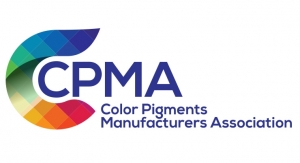06.27.18
The Color Pigments Manufacturers Association (CPMA) hosted Committee Week at its headquarters in Arlington, VA, from May 14-15, where industry experts met with Environmental Protection Agency (EPA) officials to discuss implementation of the Toxic Substances Control Act (TSCA), including evaluation of existing chemicals, TSCA inventory reset and proposed TSCA user fees rule.
CPMA has taken the lead in the dialogue with EPA and stakeholders in working with the Agency to provide information on the manufacture of color pigments, toxicological properties and uses in commerce. Over the last year and a half, CPMA has worked with EPA in the risk evaluation of Pigment Violet 29, as one of the first 10 substances to be evaluated under amended TSCA. Tala Henry, acting deputy director for EPA’s Office of Pollution Prevention and Toxics (OPPT), discussed the new process and next steps for chemicals prioritization and risk evaluation at the May meetings. The Agency must designate 20 high-priority substances for the next round of risk evaluations by December 2019.
Tracy Williamson, chief of EPA’s Industrial Chemistry Branch, OPPT, discussed progress of the TSCA inventory reset and reporting requirements for active substances in commerce. EPA plans to publish an initial inventory by November 2018. “Inactive” designations will become effective in February 2019. CPMA is also monitoring activities in Europe, including registration of inorganic color pigments containing metals and classification of titanium dioxide, and how they may impact TSCA registrations in the U.S.
CPMA members also met with Mark Hartman, acting deputy director, OPPT, to discuss the impact of the proposed TSCA fees on the color pigments industry. Key points included the need to consider the scope of work for TSCA risk evaluations, additional time to form industry consortia and requirements for cost sharing.
CPMA continues to work with EPA during the phases of TSCA implementation and evaluation of color pigments in commerce.
CPMA has taken the lead in the dialogue with EPA and stakeholders in working with the Agency to provide information on the manufacture of color pigments, toxicological properties and uses in commerce. Over the last year and a half, CPMA has worked with EPA in the risk evaluation of Pigment Violet 29, as one of the first 10 substances to be evaluated under amended TSCA. Tala Henry, acting deputy director for EPA’s Office of Pollution Prevention and Toxics (OPPT), discussed the new process and next steps for chemicals prioritization and risk evaluation at the May meetings. The Agency must designate 20 high-priority substances for the next round of risk evaluations by December 2019.
Tracy Williamson, chief of EPA’s Industrial Chemistry Branch, OPPT, discussed progress of the TSCA inventory reset and reporting requirements for active substances in commerce. EPA plans to publish an initial inventory by November 2018. “Inactive” designations will become effective in February 2019. CPMA is also monitoring activities in Europe, including registration of inorganic color pigments containing metals and classification of titanium dioxide, and how they may impact TSCA registrations in the U.S.
CPMA members also met with Mark Hartman, acting deputy director, OPPT, to discuss the impact of the proposed TSCA fees on the color pigments industry. Key points included the need to consider the scope of work for TSCA risk evaluations, additional time to form industry consortia and requirements for cost sharing.
CPMA continues to work with EPA during the phases of TSCA implementation and evaluation of color pigments in commerce.



























